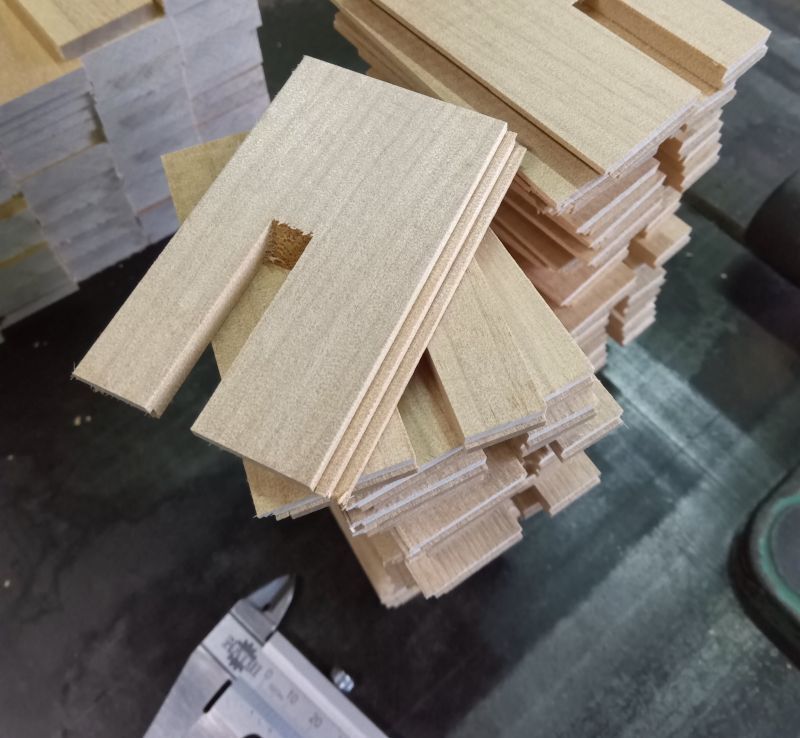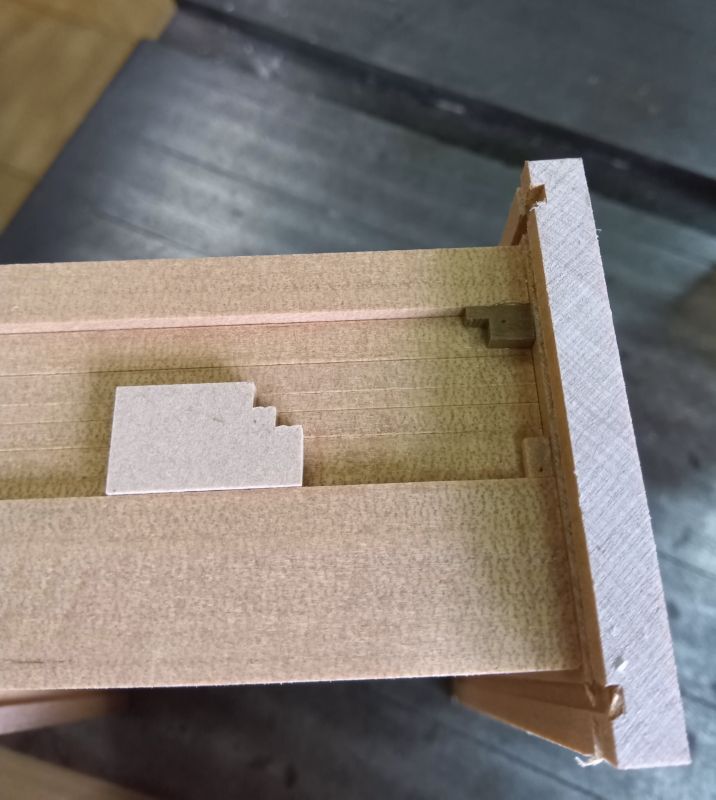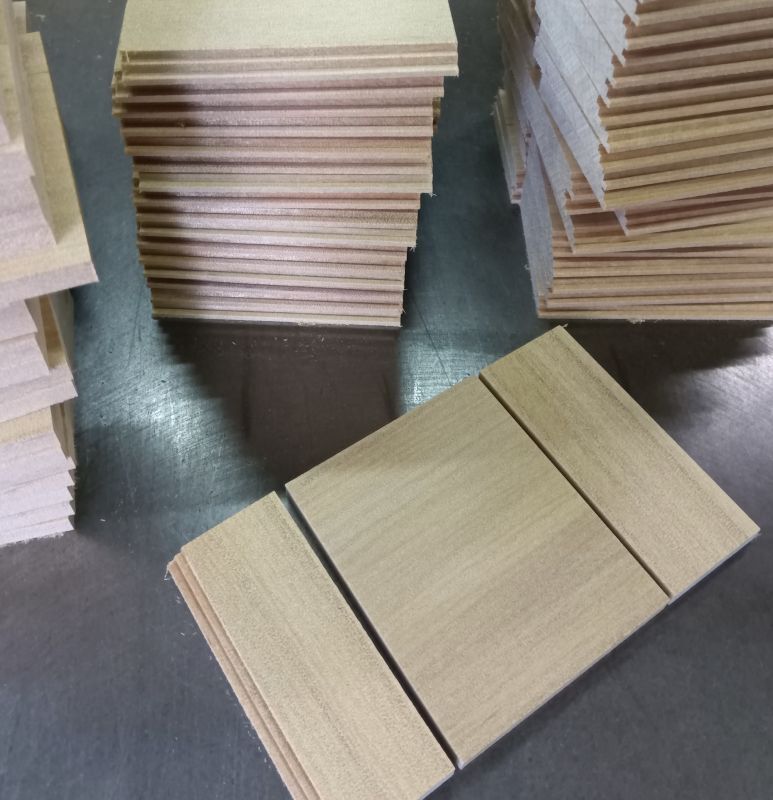21 steps (Asobi)
I am currently making the 5 sun 21 steps Japanese puzzle box, which is one of the puzzle boxes where the four panels move. By the four panels of the box, I mean the panels other than the long side panels (the top and bottom panels and the short side panels). For a puzzle box with four moving panels, there are 18-step, 21-step, 27-step, 36-step, or even more moves. Generally, as the number of moves increases, the "thickness" of the moving panels (Aruki) also increases. I am using moving panels of the same thickness for the 21-step box as those used in the 18-step box.
The 18-step and 21-step boxes have the same thickness for the moving panels, but the number of steps is different. Here, "steps" refer to the "zigzag" edges of the moving panels. This difference in the number of steps results in different numbers of moves for the four moving panels. As you can see in the photo, the steps of the moving panels and the internal steps are interlinked to create the number of moves in Japanese puzzle boxes. However, the number of steps differs for each box. As you can understand, the larger the number of moves for the puzzle box, the greater the number of steps.
The photo shows the parts and steps of the 21-step box. I create the steps by adding the jagged edge of about 2.3mm. Although it may be a bit difficult to understand, let me explain: the 21-step box has moving panels with a thickness of 6.5mm, and the edge of each step is 2.3mm. The mechanism moves down each step by 2.3mm, and if the width of the step and the width of the moving panel are both exactly 2.3mm, even a slight misalignment would cause the mechanism to catch and not move correctly. Since the boxes are handmade, it's impossible to assemble them as perfectly as industrial products. Therefore, while I make the internal structure's steps 2.3mm, I make the moving panel's steps slightly smaller. In this case, I make them 1.9mm. By doing so, even if the initial moving panel only moves, say, 2.1mm, the mechanism can still progress to the next step. This intentional offset allows each subsequent step to have some tolerance, ensuring the mechanism operates smoothly. In the case of the 21-step box, with the moving panels being 6.5mm thick, the width of the steps is 1.9mm + 2.3mm + 2.3mm = 6.5mm over three steps.
This technique is referred to in Japanese as "Asobi" and is commonly used in handmade woodworking. My explanation was quite complicated, wasn't it?😅
The 18-step and 21-step boxes have the same thickness for the moving panels, but the number of steps is different. Here, "steps" refer to the "zigzag" edges of the moving panels. This difference in the number of steps results in different numbers of moves for the four moving panels. As you can see in the photo, the steps of the moving panels and the internal steps are interlinked to create the number of moves in Japanese puzzle boxes. However, the number of steps differs for each box. As you can understand, the larger the number of moves for the puzzle box, the greater the number of steps.
The photo shows the parts and steps of the 21-step box. I create the steps by adding the jagged edge of about 2.3mm. Although it may be a bit difficult to understand, let me explain: the 21-step box has moving panels with a thickness of 6.5mm, and the edge of each step is 2.3mm. The mechanism moves down each step by 2.3mm, and if the width of the step and the width of the moving panel are both exactly 2.3mm, even a slight misalignment would cause the mechanism to catch and not move correctly. Since the boxes are handmade, it's impossible to assemble them as perfectly as industrial products. Therefore, while I make the internal structure's steps 2.3mm, I make the moving panel's steps slightly smaller. In this case, I make them 1.9mm. By doing so, even if the initial moving panel only moves, say, 2.1mm, the mechanism can still progress to the next step. This intentional offset allows each subsequent step to have some tolerance, ensuring the mechanism operates smoothly. In the case of the 21-step box, with the moving panels being 6.5mm thick, the width of the steps is 1.9mm + 2.3mm + 2.3mm = 6.5mm over three steps.
This technique is referred to in Japanese as "Asobi" and is commonly used in handmade woodworking. My explanation was quite complicated, wasn't it?😅


